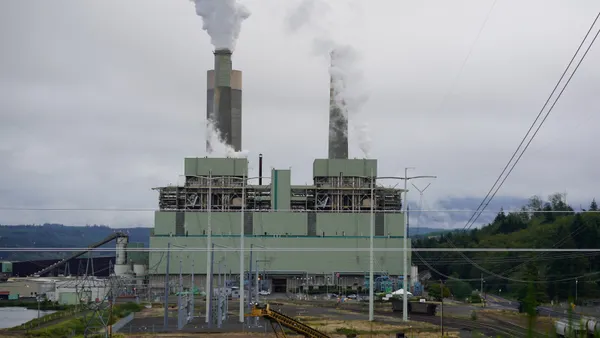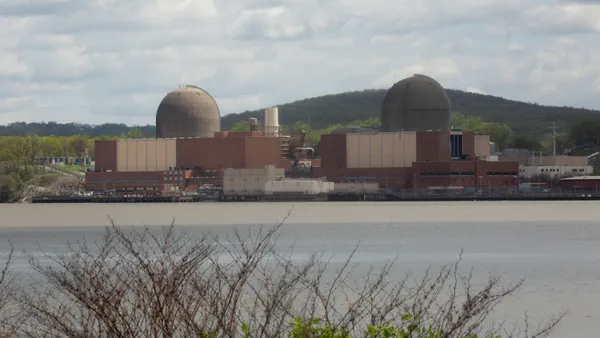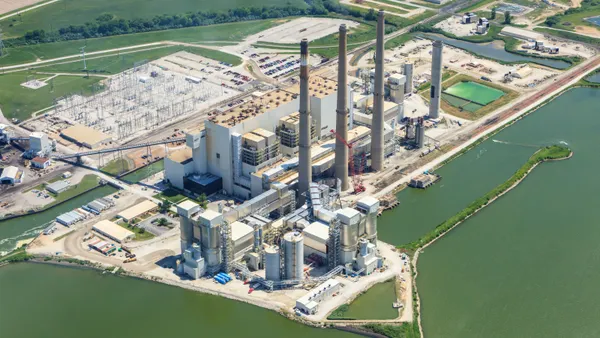Dive Brief:
- Reliability margins on New York’s electric grid are shrinking as more fossil fuel generators retire and non-dispatchable renewables are added, the state’s Independent System Operator warned on Wednesday. “We're taking on a little bit more risk,” NYISO President and CEO Richard Dewey told reporters in a call to discuss the grid operator’s annual Power Trends 2022 report.
- Looking out to 2040, when state law requires a 100% carbon-free electricity system, the report concludes 10% of New York generation will need to come from resources that “are not commercially available at this time.”
- The ISO’s report comes days after the state’s legislature killed a measure that would have authorized the New York Power Authority to develop and own renewable energy projects, as well as phase out fossil generation.
Dive Insight:
New York has historically enjoyed a surplus of generation, but efforts to decarbonize are beginning to show up in forward-looking reliability assessments, Dewey said.
“If you look at the last three years, 2019 through 2021, you can see that retirements have significantly outpaced the new additions,” he said. And he said these retirements are occurring as New York prepares to electrify buildings and its transportation sector, adding significant load and ultimately shifting the state’s grid from a summer- to a winter-peaking system.
“We've got a close eye” on the declining reliability margins, Dewey said. “And we're going to need to continue to very carefully make sure that we maintain adequate resources on the system as we plan for the transition of the grid.”
Reliability margins represent both resource adequacy and transmission security capabilities above the grid’s installed reserve margin and locational capacity requirements, according to the Power Trends report. The ISO’s 2022-23 installed reserve margin is 19.6%, a decrease over the prior year level of 20.7%, it says. However, the assessment also says the margin “is likely to increase with the expansion of intermittent renewable resources on the system.”
New York has been adding large amounts of renewable capacity and on June 2 the state announced the selection of 22 large-scale solar and energy storage projects representing more than 2 GW of solar and about 160 MW of storage. The new projects put New York on pace to deliver up to 66% renewable electricity by 2030, say officials.
And in an effort to develop more renewables, the state’s Senate, on June 1, advanced legislation to authorize the New York Power Authority to develop and own renewable energy projects. That bill did not advance in the Assembly, however, over concerns it would stifle private development.
The Alliance for Clean Energy New York said in a tweet that the legislation would “undermine growth” and cut off “critical” investments in solar and storage. Though not typically on the same side of issues, the Independent Power Producers of New York also opposed the bill and tweeted “there is no shortage of private investment interest in NY.”
The ISO takes no position on legislation, but does consider how enacted government policies impact grid operations, a spokesman said.
Looking ahead to 2040, when New York's grid will need to be carbon-free, ISO officials say there are "gaps" in the resource mix and about 10% of the state's energy production will need to come from dispatchable emissions-free resources that have yet to be identified.
NYISO projects 62% of winter demand in 2040 will be met with renewables, primarily onshore and offshore wind. Another 23% of generation will come from baseload resources like hydropower, nuclear and imports, and 5% of demand will be met with storage and demand-side management. That leaves 10% dispatchable, emissions-free resources to be determined.
"There are a number of promising technologies, including things like carbon capture or hydrogen production, which will give us the attributes and the capabilities that a gas turbine can provide, without emitting either carbon dioxide or any other pollutants,” Dewey said.














